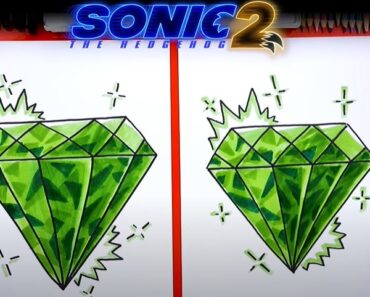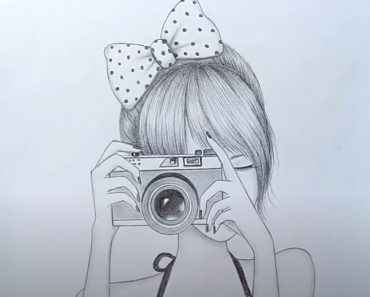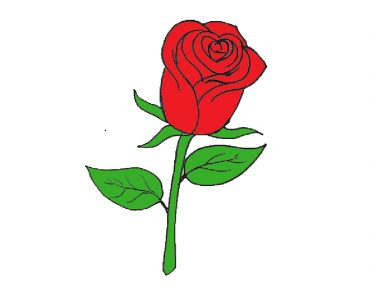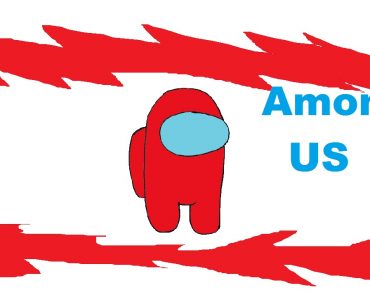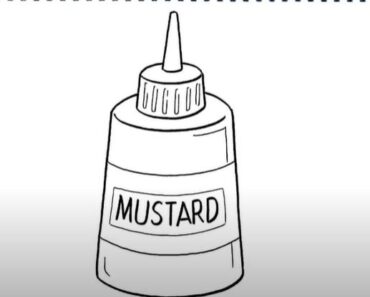How to Draw Gandalf from Lord of the Rings with this how-to video and step-by-step drawing instructions. Pencil drawings for beginners and all.
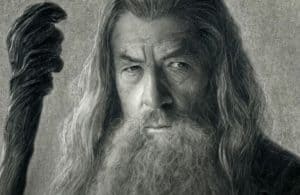
Please see the drawing tutorial in the video below
You can refer to the simple step-by-step drawing guide below
Step 1
Lightly draw an oval with a #2 or HB pencil. Make sure you draw it as seen in the picture.
Step 2
Now draw a red bisector to balance the contours of his face.
Step 3
Lightly outline the crescent red lines for the hairline and head block.
Step 4
You can draw lines a. for eyebrows, b. for eyes, c. for the nose, d. for mouth, e. for shoulder positions.
Step 5
Now draw Gandalf’s eyebrows and winged eyes with the bag.
Step 6
Observe where Gandalf’s features appear in relation to the principles. Draw on the eyebrows, shadow marks on the left, nose and right contour of the face.
Step 7
Watch closely how Gandalf’s mustache, a small part of his mouth, and beard are related to the principles. When you draw, you will have more accuracy. Also outline the hairs in his beard.
Step 8
If you don’t have one, you can delete your rule. As you sketch in his hair, add those lines and curls. Try staying close to the lines that represent his direction & curls. This will be useful when you shade it. At the same time end the shoulder.
Step 9
I made this line drawing especially for you if you don’t want to do the pencil shading and blending. If not, let’s continue with the pencil drawing.
Step 10
Here is a sketch done with a 0.7mm mechanical pencil. Look closely and see if your lines look like this. You can delete if certain areas like the eyes or nose don’t align. Be patient with this, it’s not as complicated as you think. As you make more images, this will come easier to you.
Step 11
Before we go any further, I would like to mention some of the tools I used, which are the famous white acrylic and also sandpaper. While covering Gandalf’s cloak, I used sandpaper. In the upcoming steps, I want to show you some amazing uses of pencils.
Step 12
The best thing you can do when drawing hair is to establish a general shape then work on the main strands by holding your pencil at a 45 degree angle to smooth and cover. Then, as in the third image, you can work in more detail. But here’s a TIP! Do not draw a straight line for the hairline. Make small strokes to show the top of the hair at its base. Look at real people and see that their hairline is not a straight line. Practice and your painting will look more realistic
Step 13
The image accompanying this step shows two different ways to hold your pencil to achieve certain effects. EXCELLENT: Holding a pointed pencil in normal writing with your fingers in the center or near the tip gives you fine control and fine/detailed strokes. UNDERSTAND: Hold the pencil at a 45-degree angle or near the table with the tip of the pencil under your palm with the pencil flat, giving you great coverage. With the #2 pencil, you have the lead exposed for shading. But for a larger area, use that Cretacolor Monolith graphite pencil without a wooden case. The whole sharpened part is all lead, just like in the picture of the step. Practice toning values to help you stay in control.
Step 14
PENCIL STROKES & TONE, SHADING, TEXTURE – For your convenience, I have inserted this step with different pencils, strokes to use. And you can study the shapes that make up this drawing universe, along with tones, shadows, and textures.
Step 15
The image here is a great exercise for value shading. I have a secret little trick for you to make things easier. You can download it to your desktop. First click on the image to get access to the full size. By right clicking your mouse, you can select “Save Image As.” It will save to your desktop.
Step 16
After printing out some of the patterns above, practice shading in the values like this one. You get used to this shading technique giving you more control and confidence.
Step 17
Honestly, I’ve never been an elder like this before. I was like, “What do I do with his beard and hair… there’s so much of that.” Thrilled about the first time I resorted to sketching details with my trusty 0.7mm HB mechanical pencil.
Step 18
With my blend stump, I smoothed the outline lines and added texture lines to his cape mechanically by 0.7mm with F (smooth) lead.
Step 19
This is the first start with pastel color application. If you draw the whole picture in pencil sketch, this is where you will sketch into circles or small lines to shade areas. It will take hours to cover all that area with a pencil. I chose to shade with pastels. In a few strokes I had coverage. Apply medium gray to face. Medium dark gray to hair, glossy backside and shoulders. Looks like a mess. That’s how a starting project will appear. Be patient with you and keep applying white, gray and black layers. You will have a great result.
Step 20
Here I used my blend stump to “draw” more lines, adding shadows to his beard and face. I need to whiten areas like some of the curls on his beard and the hairs on his shoulders. I also “kneaded” it to light up. *wink* After those adjustments, I sprayed the painting with “Krylon Workable Fixatif” to adhere the pencils and pastels to the paper for a smudge-free and usable surface.
Step 21
The first picture, I sketched on the background with my 9B graphite pencil and the very dark areas in the picture and added dark gray chalk, this took away most of the detail of Gandalf’s cloak (arghhh ). The second one, I blend with my stump and add contours to his hair and beard. I took a medium gray stick and dabbed at his beard to add texture and depth. I also darkened his cape and darkened the texture lines with sandpaper underneath to add that burlap feel.
Step 22
I have to say this… Oh, I’m ENDED I’M ENDED… how about you? This is a great learning experience. I couldn’t believe the detail that went into his hair and beard. But I thought he was a handsome older man, so that encouraged me. *wink* You don’t have to go as far as I did. I took pure opalescent watercolor and added highlights to his hair, mustache/beard (mixed with pastel gray creates a nice blend), and sparkles in his eyes. I am completely satisfied. And I hope you do too with your creativity. To help with specific areas of highlights, tones, textures, and more, the next two steps will show you.
Step 23
Without highlights, your image will have a flat appearance. Click this image to learn how to make your own pictures POP out!
Step 24
Click on this image to see how Tones, Shadows, Textures and Reflections affect Ian McKellen as Gandalf, a brilliant actor! I am closing right now. But all of you are amazing and it’s been a pleasure to work with you on this tutorial. Please like, comment and vote here. And I will definitely reply back soon or last. Love, peace, happiness, success and better days come to you! *hug* *blowkiss*
